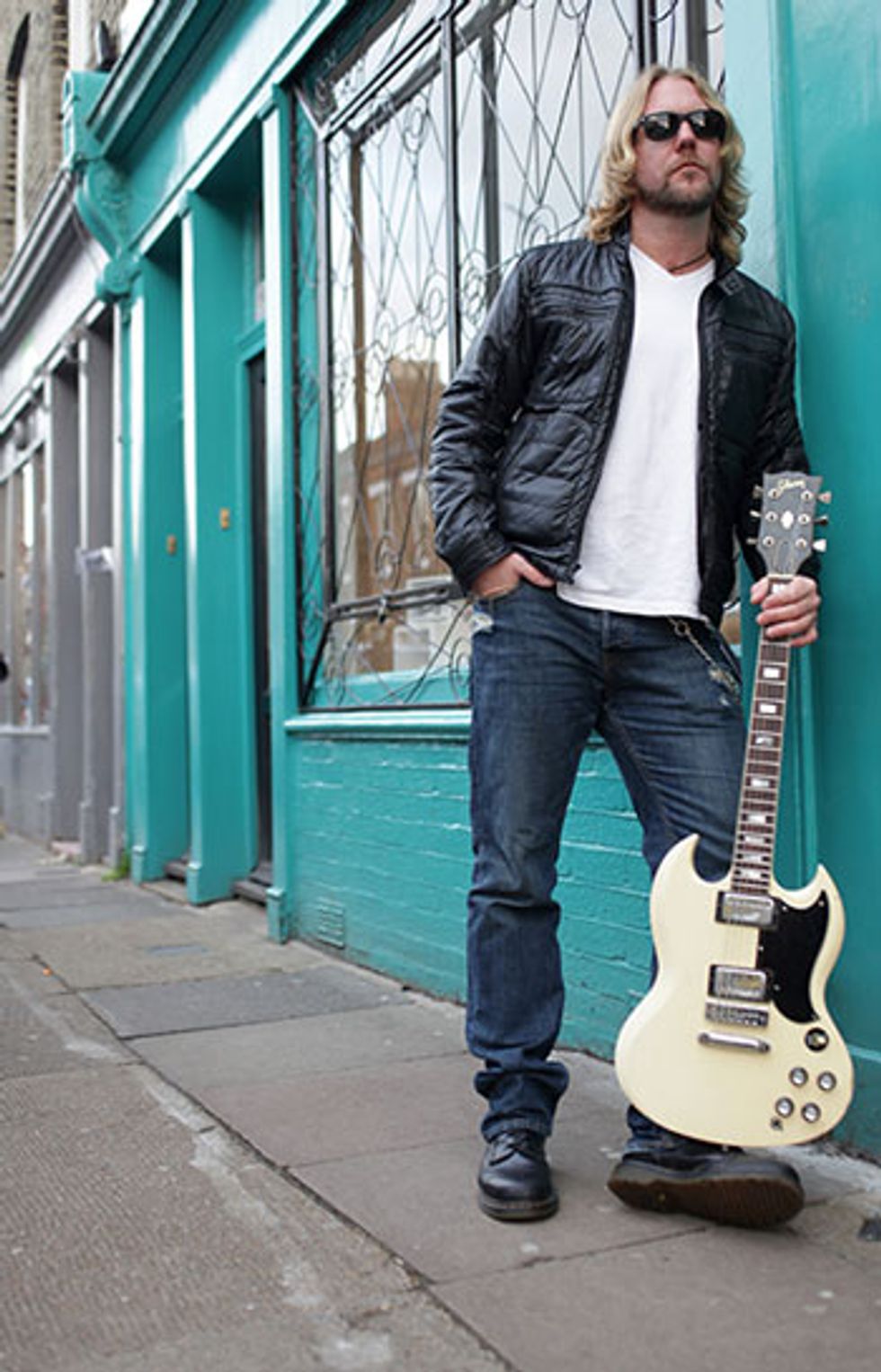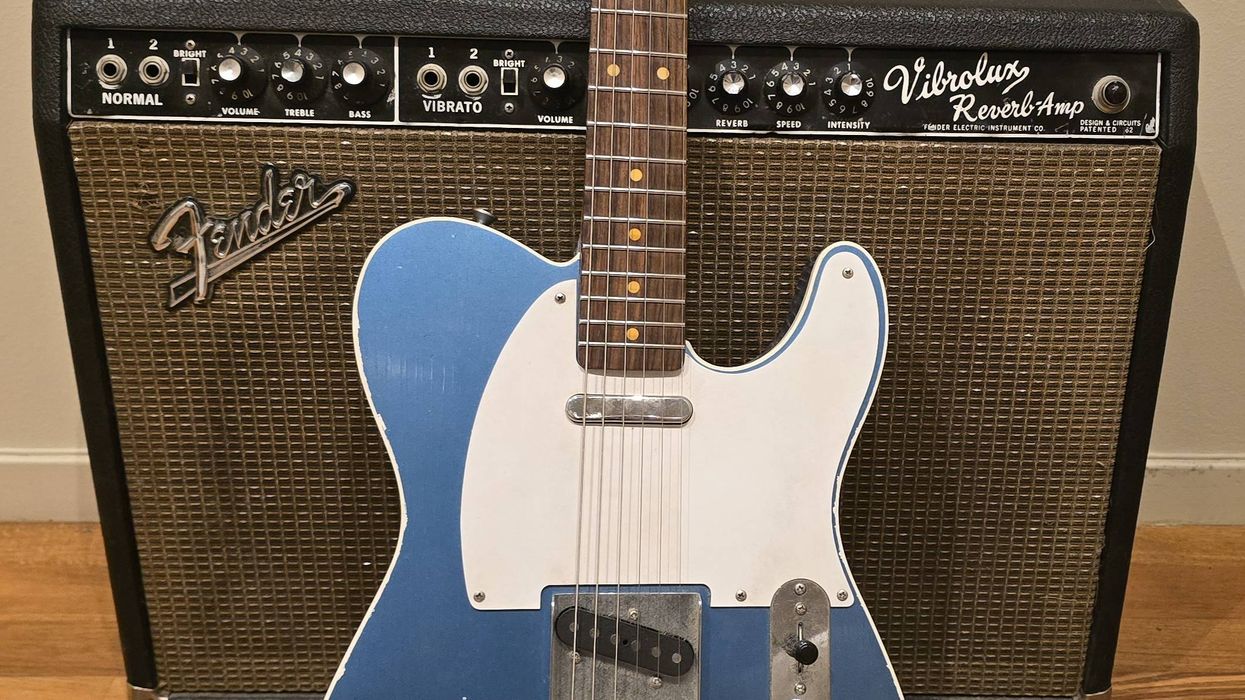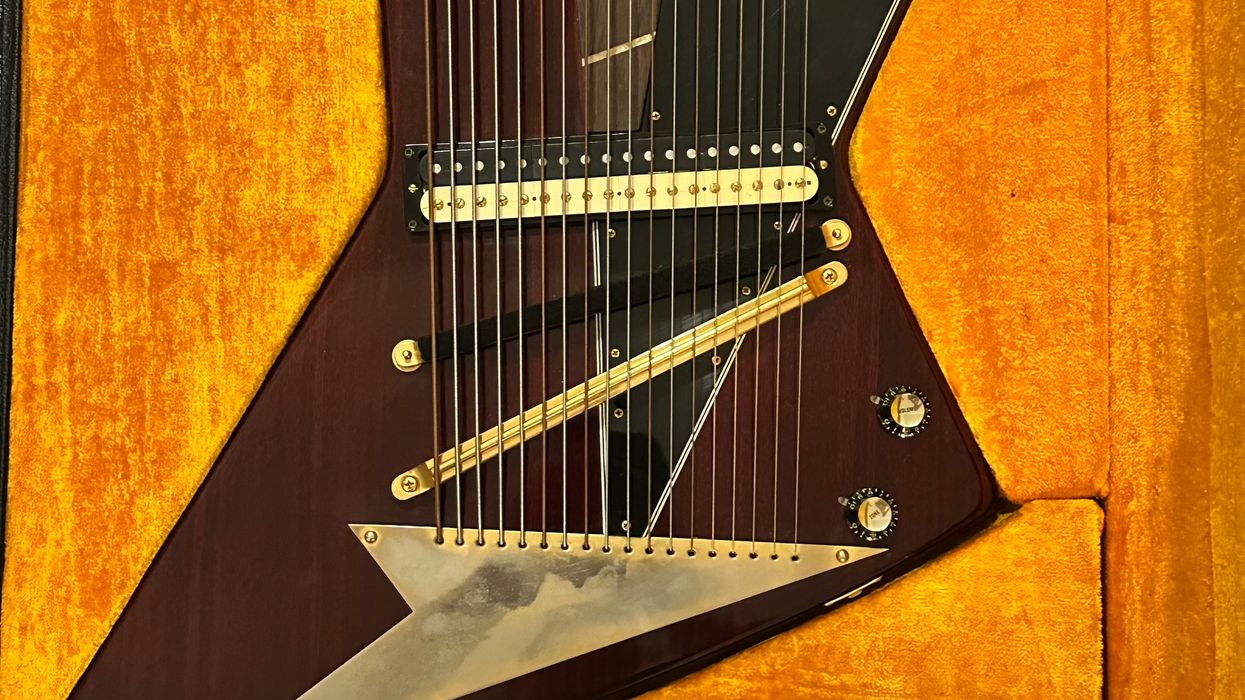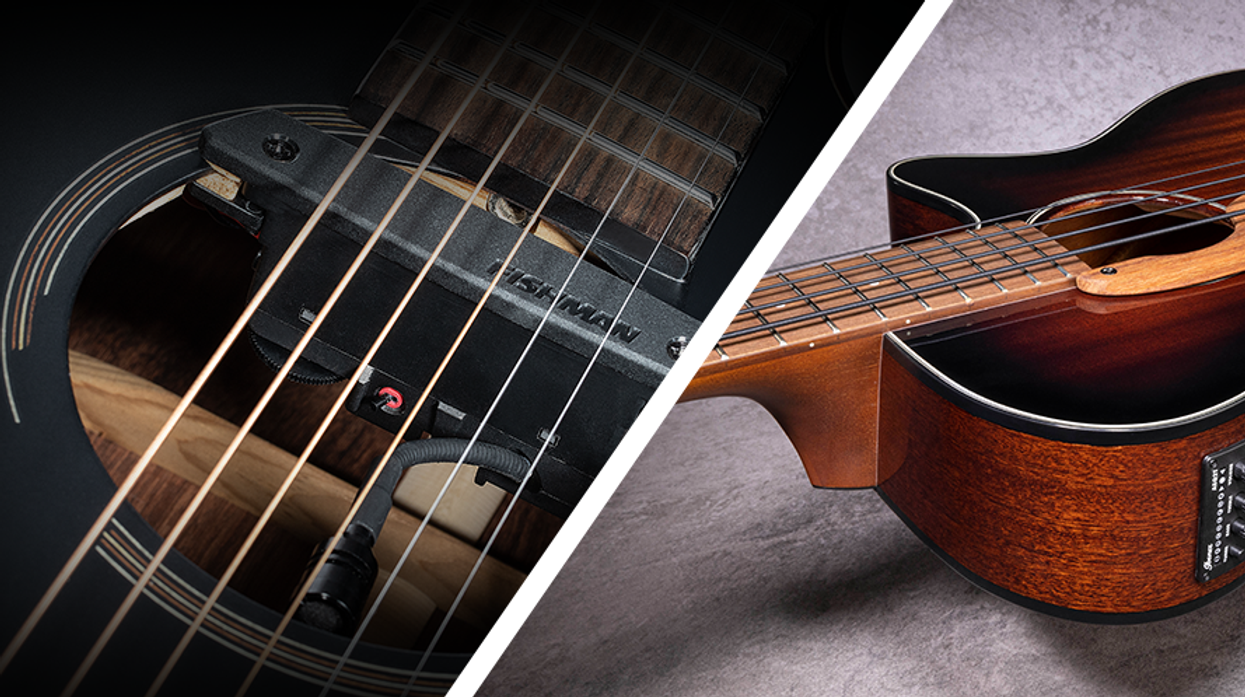Listen to "When I Left Home" from Turquoise:
“Nobody wants to get to the top of the mountain and be asked how the helicopter ride was. The common misconception is that I grew up on a tour bus and never had to work a real job, and that’s so wrong,” says guitarist Devon Allman, who first met his father Greg Allman at the Fox Theater in St. Louis when he was 16. “Growing up without my dad proved to be very good for me. It made me develop a work ethic and it also gave me an organic path to my musical career.”
Since hitting the scene, Allman has divided his time between two bands—Honeytribe and Royal Southern Brotherhood (a blues-rock supergroup featuring Cyril Neville and Mike Zito). Both groups prominently feature Allman’s guitar-playing prowess. Turquoise, Allman’s first solo album and latest release, takes the focus away from the fretboard and sets its sights on songwriting. The opening cut, “When I Left Home” offers Allman a chance to reflect. The sensitive guitar slinger says, “I never really had a song that dealt with my story. I left high school and went on tour with my dad. The day that I split high school, that very night I flew out to New York. I hung out with my pops for a few weeks and then started the Allman Brothers tour. It was, for me, to see what it would be like because I was kind of struggling between choosing acting—theater—versus being a touring musician and making records. As soon as I got out there, I was like, ‘Yeah, I know what I want to do.’”
We caught up with Allman (who has an image of his hero, Curtis Mayfield, tattooed on his right bicep) to get an inside look at the making of Turquoise and also get the scoop on his gear, including the inexpensive resonator that proved to be the star of the recording session and the cigar box guitar given to him by a fan.
Turquoise seems more focused on songs than your other projects, Honeytribe and Royal Southern Brotherhood. Was this an intentional decision as you were making the album?
Yeah. It was time to make a solo album without the framework of being in a band. This is a lot more of a laid-back singer/songwriter kind of record. With Royal Southern Brotherhood, there’s a lot going on, and Honeytribe is a lot more aggressive. People that have seen me over the last 10 years might have expected to hear a lot more guitar. A lot of people think that I lean on the wah wah quite a bit but I am really proud to say this record has not one wah wah. The funny thing is that there is a lot of lead guitar on the record but it’s very understated. I really wanted to capture the tastefulness of playing and I kind of took a page from Clapton. Not stylistically but in terms of the approach. I was able to draw from different genres and styles.
The album definitely displays a broad stylistic range. “Strategy” and “Into the Darkness” have a soul vibe, “Homesick” has a reggae influence, and you also have an acoustic instrumental. How were you able to keep the album cohesive?
I have no idea [laughs]. It wasn’t really thought out—I didn’t have some vision or plan for it. These are songs that just kind of came together at the last minute and we laid it down. Honestly, I was just hoping that the voice of the guitar would be the linear thread that would tie it all together. Luckily, it all worked.
The album starts off quite energetically and gradually gets mellow by the last track. Was that programming intentional?
Once the songs were all done, I designed it that way. I thought it was a nice exit strategy to mellow out a little bit. To kind of wrap things up. It’s good to listen to a whole album—a lot of people don’t do that anymore.
Jazz saxophonist Ron Holloway plays the recurring, catchy melodic line in “Into the Darkness.” Did you write that with him in mind?
Ron’s a friend. I’ve known him for years and he’s sat in my with my band 10 or 12 times. He played on my last Honeytribe record. The melody was initially a guitar thing and I was fine with just laying it down on guitar but the more I heard it, the more I really heard him on it. I was like, “Man, it would give it a whole new level of cool to get Ron on the track.”
I understand that he flew in for the session and finished his part in a couple of hours.
He had some things to do with Warren Haynes so we got him in, he cut his part, and we got him out. He landed at 10 a.m. and he was gone by 5.

On “When I Left Home,” Luther Dickinson plays slide and lead. Because that’s such a personal song, did you intentionally not play those parts on that one to try and steer clear of the slide/Allman association?
Luther’s a friend and he’s such a great player, so it just made sense. Slide in my family is very well spoken for. The craziest thing is that I’ve never played slide—kind of out of respect to Duane. I’ve never really messed with it but I really did hear it on that track. I never wanted to be the cat that learned all of Duane’s licks and stuff. It was always about trying to find my own way. That’s not to say that I don’t respect the Allman Brothers’ catalog because it’s absolutely amazing and I’m a really big fan. I just didn’t want to get stuck in that groove where I was expected to play that because of my relationship. I’m my own person. I fell in love with The Beatles first and then it went on to Kiss and Tom Petty.
That might explain why you chose to include a cover of Petty’s “Stop Draggin’ My Heart Around.”
I actually wanted to remake that song for about 10 years. I’ve always had it in my mind that it would be really cool to take that song, slow it down a little bit, make it a little bluesier, and get a really great female vocalist for it.
You got Samantha Fish [“Cachet 22,” November 2011] to sing with you on that one.
It really worked out. We’re friends, on the same label, and have the same publicist. She’s amazing. Just like Susan Tedeschi was being called the “next Bonnie Raitt,” I think that Sam is like the next Susan Tedeschi. She’s next in line. She’s just got one of those voices.
Fish is also a great guitarist but you didn’t get into a guitar duel with her, as might be expected.
Correct. She’s a great lead guitarist but that song doesn’t feature any leads. There was discussion about us maybe trading licks at the end but the song doesn’t really lend itself to that. It’s such a song and not really a jam.
What guitar are you using on “Yadira’s Lullaby?”
That’s a cigar box guitar that I was given on tour by a fan. It’s a custom one made for me with a double neck—there’s a 4-string and a 3-string—and it’s an old cigar box from Honduras. This track was all done on the 4-string.
Me and my girl [Yadira Rodriguez] would Skype when I was on tour and I was playing this tune and it just stuck with me. I thought that it fit. I’ve had this theme with my records, going back to my Honeytribe records, where there’s an acoustic solo piece. I thought it would be cool to continue the theme but not necessarily on an acoustic guitar.
Are you playing that [“Yadira’s Lullaby”] with your fingers? The upper notes sound very crisp, against the low open drones.
The whole thing is fingerpicked. Over the years I found myself playing leads with my fingers instead of a pick and it worked perfectly on the cigar box. Live, many times much to the chagrin of photographers, I end up putting the pick in my mouth and switching to fingers, then going back and forth and back and forth. It really depends on the area of the song and what kind of approach, or lack of attack, that the particular part needs.
Are you also using the cigar box guitar on “Time Machine” and “Turn Off the World?”
No, I’m using a Gretsch resonator. It’s kind of crazy. I bought this $500 resonator, and I only bought it to play a song on the Royal record called “Nowhere to Hide” because that song is tuned down really low, to C#. Although I bought the guitar just to play on that song, I noticed that it has a unique quality and I started writing on it. I ended up recording with it—all the leads on “Time Machine” were done with it. We were blown away by it, and that guitar really became the MVP of the session.
What other guitars did you use on the album?
My number one is a historic ’59 Custom Shop Les Paul in cherry sunburst. It’s probably on two-thirds of the record. Les Paul signed it before he passed away. I got to play with him. I also used a Strat on “Strategy,” which is kind of apropos. I have a Tele that was made by Kurt Linhof. He’s a boutique guitar maker and he’s also the guy that sold Duane Allman his tobacco burst that’s in the Rock and Roll Hall of Fame.
Tell us about your signature Fuchs amp. What type of sounds were you aiming for?
I really wanted classic tones like a Stones-y or a Tom Petty kind of thing. Not too gain-y, just breaking up a little bit. A timeless sort of sound.
Devon Allman's Gear
Guitars
2006 ’59 Historic Les Paul Re-issue Custom Shop (cherry sunburst) signed by Les Paul, ’78 Vintage Gibson SG (polaris white), Gretsch G9230 Squareneck Bobtail acoustic-electric Resonator (sunburst), SlackJack cigar box guitar, Kurt Linhof T-style, Strat-style parts guitar
Amps
Fuchs 100W Custom Devon Allman signature series ODS amp (tic-tac white), Fuchs 2x12 custom cabinets (tic-tac white)
Effects
Dunlop Cry Baby Classic wah, Xotic EP Booster, Boss TU-3
Strings, Picks, and Accessories
D'Addario nickel wound strings .010s, Dunlop .73mm yellow Tortex picks, Spectraflex cables, Zebo Allman Brothers edition leather guitar straps
Because of the name association, many people assume that you’ve had a
free ride with your career but you’ve actually paid your dues. I
understand you’ve worked at Burger King and Guitar Center, among other
unexpected places. Why not just ride the Allman Brothers gravy train?
That was never part of the game plan. I just want to be able to know
that I did the work myself. I want to look back on a 40-year career and
think, ‘Damn, it really grew on its own.’” Dude, I’ve done every job
that you can imagine. I worked in a steel factory, a T-shirt screen
printing sweatshop, I’ve worn a suit and sold insurance, and one of my
last jobs before I started touring the world and making records was
Guitar Center. The really cool thing about doing all those jobs is that I
really have a profound appreciation and respect for what I’m able to do
every day.
I noticed you have Curtis Mayfield’s image tattooed on your left bicep.
Curtis Mayfield’s always been my biggest hero. He was a rare cat. I had
read somewhere that Hendrix was influenced by him and I was such a
Hendrix freak that I was like, “I have to check this guy out. If this
cat influenced Hendrix, he’s got to be badass.” I went back and did my
research and I fell in love. I bought every record he ever made. He’s
one of those rare cats that when you listen to those records, if it’s
got a horn section and a string section, it doesn’t sound like Disney.
It sounds amazing. It doesn’t matter what mood I’m in. When I play some
Curtis Mayfield, the world is groovy again.
YouTube It
Watch Devon Allman’s killer skills in both guitar playing and vocals.
Devon Allman plays the wistful “Yadira’s Lullaby” on a cigar box guitar at the YMCA Boulton Center in Long Island, New York.
Devon Allman performs “When I Left Home,” the opening track of his latest release, Turquoise, at the Sellersville Theatre, in Sellersville, Pennsylvania.
Sitting in with the Allman Brothers Band during their annual Beacon Theatre NYC residency, Devon Allman jams on the blues staple “Key to the Highway.”









![Rig Rundown: Russian Circles’ Mike Sullivan [2025]](https://www.premierguitar.com/media-library/youtube.jpg?id=62303631&width=1245&height=700&quality=70&coordinates=0%2C0%2C0%2C0)















![Rig Rundown: AFI [2025]](https://www.premierguitar.com/media-library/youtube.jpg?id=62064741&width=1245&height=700&quality=70&coordinates=0%2C0%2C0%2C0)




















 Zach loves his Sovtek Mig 60 head, which he plays through a cab he built himself at a pipe-organ shop in Denver. Every glue joint is lined with thin leather for maximum air tightness, and it’s stocked with Celestion G12M Greenback speakers.
Zach loves his Sovtek Mig 60 head, which he plays through a cab he built himself at a pipe-organ shop in Denver. Every glue joint is lined with thin leather for maximum air tightness, and it’s stocked with Celestion G12M Greenback speakers.











